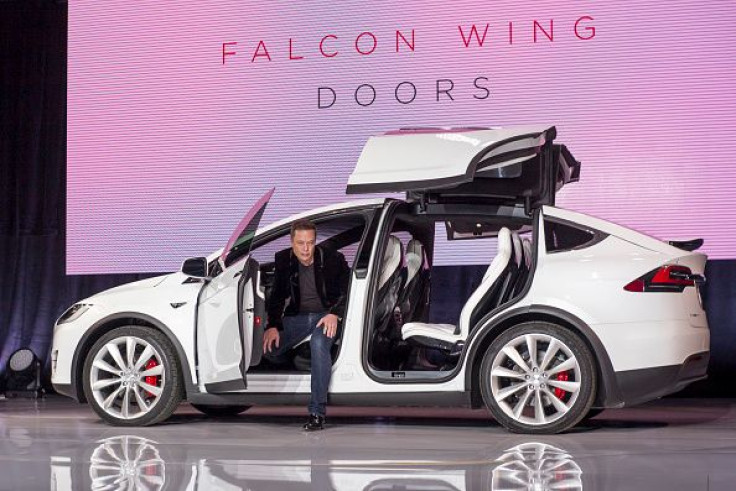Tesla Motors Inc. (TSLA) Q1 Earnings Preview: Look For CEO Elon Musk To Discuss Progress On Model X Deliveries, Model 3 Update

UPDATE: Click here for Tesla Motors' first quarter earnings numbers.
It’s been nearly five weeks since Tesla Motors unveiled its $35,000 Model 3, setting off an avalanche of preorders, an immense amount of online chatter about the electric compact sedan and a windfall of much-needed cash. On Wednesday, the world will get the latest update on developments from the 13-year-old Silicon Valley electric car company when it releases its financial results for the three months ended March 31.
The big question for the quarter will be progress with the Model X sport utility vehicle that began to trickle into the U.S. market in the last three months of 2015. The pace of Model X production was slower than anticipated, and total Tesla sales for the first three months of the year missed expectations, despite a 45 percent jump in Model S electric car sales.
Sales are one of the most important metrics for the unprofitable, cash-bleeding company. By most estimates the last half of the year will require Tesla to deliver an average of about 24,300 Model S and Model X vehicles in each of the last two quarters in order to reach its minimum target of 80,000 unit deliveries, up from a little over 50,000 vehicles last year. The company delivered a record 17,500 units in the last three months of 2015, so Tesla will need to significantly step up its production game moving forward.
Co-founder and CEO Elon Musk can expect to be asked during the company’s post-earnings conference call with analysts (which can be heard here after markets close in New York on Thursday) about a damning Consumer Reports article citing numerous quality issues with the Model X, most notably with the vehicle’s complicated articulated, two-joint “falcon wing” doors. Tesla has downplayed the problems, which include doors that don’t open or close properly, and so far most customers and investors are giving the company the benefit of the doubt. For the early adopters, these “beta” versions of the Model X required a trip to a company service center for repairs.
Wait, what? pic.twitter.com/PvNlJ6A44A
— Charley Grant (@CGrantWSJ) April 27, 2016
“Many Model X issues are resolved (but still working through some) based on discussions with dozens of customers,” Baird Equity Research analyst Ben Kallo said in a note on Friday in which he reiterated his “outperform” rating on Tesla’s stock with a one-year target price of $300 per share, substantially above Monday’s closing price of $241.80.
A Thomson Reuters poll of 19 equity analysts last week showed eight with buy recommendations, while six advised investors to sell and five advised current investors to hold the stock. The number of sell recommendations for Tesla has grown steadily over the past 12 months, largely due to concern over how much further the stock price can grow under current company and market conditions.
Tesla’s $31.47 billion current market value is more than half the value of Ford or BMW, but the company has only reported one profitable quarter based on Generally Accepted Accounting Principles. Based on adjusted, or non-GAAP profit, the company has reported seven quarterly gains. Both accounting methods show Tesla’s losses have mounted every quarter since the end of 2014.
Analysts polled by Thomson Reuters expect the Palo Alto, California, electric car company to report for the three months ended March 31 a narrower year-over-year loss of $65.1 million, or 86 cents per share, compared to a loss of $154.2 million, or $1.22 per share, in the same period last year. Revenue is seen growing to $1.60 billion from $1.10 billion in the year-ago period.
So far, Tesla has spent about $4 billion to fulfill Musk’s dream of a world filled with battery-powered cars, according to research firm Sanford C. Bernstein. The company was sitting on about $1.2 billion in cash at the end of last year after spending about $1.6 billion in 2015.
Tesla collected nearly 400,000 preorders in the first three weeks following the March 31 unveiling of a working Model 3 prototype. Musk will almost certainly provide an update on the number of preorders for the car. At $1,000 a (refundable) pop, the company collected around $400 million in Model 3 down payments last month.
This cash provides a much-needed cushion for Tesla, buying it more time before it needs to raise more capital for its massive expansion plans, including its multi-billion-dollar lithium-ion battery “gigafactory” in Nevada. The factory becomes a higher priority now that Tesla is on the hook for hundreds of thousands more cars that it needs to build.
Tesla’s goal is to sell 500,000 cars annually by 2020.
© Copyright IBTimes 2024. All rights reserved.












